
Waxing a Car With a Machine Polisher- Good Or Bad Idea?
Most readers of this blog will know that the main purpose of using a machine polisher on a car is for…well…..polishing! Polishing is the process of removing defects from your cars paintwork, which leaves it in an almost new looking condition.
The term polish is thrown around loosely these days in the detailing industry.
Polish, in its true sense of the word, is a product that uses an abrasive action to remove very fine layers of clear coat protection to flatten out the surface of the car’s paint which results in a highly polished look. Such products come in varying degrees of abrasiveness ( you may hear the term “Cut” being used on a lot of products ) from light, medium to heavy cut )
In the past, I have come across a lot of people who don’t know the difference between car wax and car polish.
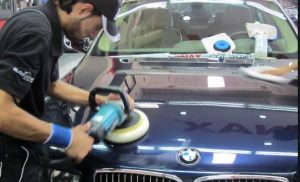
If this is you, you should read this article before you continue – The Difference Between a car wax and a car polish
Now, we all know machine polishers are designed for use with Polish on a car’s paintwork, but can they also be used to apply wax to your car instead of a hand application?
Let’s take a look.
Drawbacks of applying a Car Wax by Hand
Speed
It can be a very time-consuming process to apply wax to a car by hand. The type of wax used can often have an influence on the time taken.
Although some waxes are designed to be able to be applied and removed relatively quickly, it can still take quite a bit of time to apply evenly over an entire vehicle.
Effort
If you already have some experience waxing a car by hand, you will know exactly what I mean by effort.
It can be a physically demanding process to wax a car by hand. The constant application and removal can be tiring on your arms.
I have often woken the next day feeling like I have had a heavy arm workout!
Uneven Coverage
I find that sometimes when you apply wax by hand, it is hard to get even coverage on the paintwork. There have been many times I have layed on too thick of a layer, which makes it harder to buff off.
I also find you can miss a spot more easily using the hand application approach
So, is it possible to use a buffer to help with some of the drawbacks of polishing a car by hand?
Yes, it is. However, there are some things you should know before you start.
First things first, not every type of machine polisher is going to be suitable for wax application.
Let’s take a look.
Different Types of Machine Polishers
If you have already read my post on “The Best Car Polishers for beginners“, you will already be aware that there are various types of machine polishers that have different mechanisms of action.
These can usually be grouped into two main categories.
Dual Action or Random Orbital Polishers
Dual-action polishers are a much safer tool to simply pick up and use. By dual-action, it means that the pad not only spins in a circle, but it also oscillates. This results in a random orbit movement of the pad – sometimes such polishes are referred to as “Random-Orbit” polishers (RO polishers)
The random orbit nature of a dual action polisher means that it generates far less heat than a rotary polisher. It is a more gentle tool so correction work typically takes longer. However, it is also safer to use and easier to learn with.
Rotary Polishers
Rotary buffers are very different in the way they work compared to Dual-action polishers and Random Orbital buffers.
The drive unit used in a rotary buffer is referred to as a direct drive. It is driven directly off the electric motor.
This results in a powerful rotating motion. This rotating motion is typically clockwise as you look at the rotary buffer from behind, as though you were using it on a panel. Because the rotary buffer is a direct drive machine, it can do a lot of work very quickly.
Which Type Of Polisher is Best for Applying Wax?
In my opinion, the only type of buffer you should be used to apply wax to your car is dual-action or random orbital polisher. Due to the nature of their action, they are a much safer tool for the job.
Rotary polishers are much too aggressive in terms of power and ability to generate heat on the paint, and should only really be handled by someone who has experience with these machines.
Some great dual action polishers which are safe to use by less experienced detailers are
Griots Garage Dual Action Polisher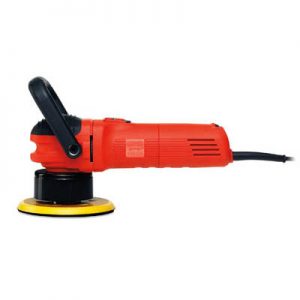
Which Type Of Wax to Use with Machine Polisher?
Another point to note is that not all waxes are created equal. Some types of car wax are more suited towards application with a machine, and others which I would not recommend.
Although I am a big fan of paste waxes, these are less than ideal for use with a buffer.
If you want to use a machine to apply the wax, I would recommend you stick with liquid waxes or glazes. These are going to be much easier to apply to the pad and spread over the car’s paint, which will give you the best results.
Some products I have used in the past which have given me great results by machine are :
Which Type Of Pad to Use with Machine Polisher?
Another important consideration when waxing a car with a buffer is to ensure you pick the right pad for the job. There are many different types of pads out there, each with a specific purpose.
For example, you do not want to use a pad that is designed for cutting or paint correction with your wax.
When waxing a car with a machine polisher, you should be using the softest pad possible. If you are using Hex-Logic Pads, you can either use a black, blue or red finishing pad for the job. You will want to avoid using the yellow or orange pads, as these are harder pads and designed specifically for a different purpose such as paint correction.
So now you know what type of tools you need for the job, let’s take a look at the process.
How to Wax a Car With a Polisher
Step 1
It should go without saying, but the first step is to ensure the car is fully cleaned before applying any wax to the paintwork. This should be done using correct wash methods to ensure the surface of the paintwork is contaminant-free, which will make sure you get the best performance from the wax.
Step 2
Apply small dots of wax or glaze to the polishing pad. No need to apply too much product
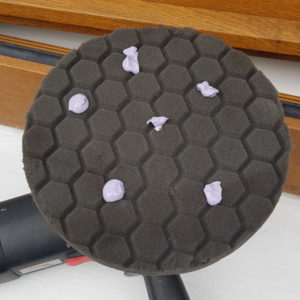
Step 3
Before turning on the polisher, you should place the polishing pad onto the paintwork and spread the wax around a bit. Do not switch on the polisher without doing this unless you want to cover yourself and the surrounding area in wax!
Step 4
Switch on the polisher to a slow speed setting and work the wax over the paintwork in a sweeping motion ( using very light pressure ), making sure even and full coverage on the surface. Once you are happy with the coverage, you can quickly move on to the next section of the car.
Unlike polishing with a compound, you don’t need to wait for the polish to break down and do multiple passes over the same area of the paint.
Once you are happy you have even coverage on a particular section of the car, move on.
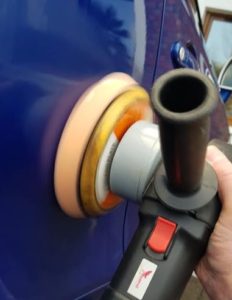
Step 5
Once you have given the wax a chance to set and dry ( typically just a few minutes with most waxes ), you should buff the wax off with a clean microfiber towel.
Waxing a Car With a Polisher – Worth it?
Now that you know the steps and what is involved with using a buffer to wax your car, is it worth it?
In my own opinion, using a machine can drastically reduce the time and effort it takes to wax a car. if you already own a polisher, I would recommend you give this method a go and see what you think.
If you have already tried this, please let me know your thoughts in the comments below, or join the discussion in the forum
Until next time,
Happy Detailing!
Go Home
About the Author – Darren O Hara
Darren is the founder of the DriveDetailed blog and is a keen detailing enthusiast living in the rainy south of Ireland. When he is not cleaning his car he is always researching ways he can improve his techniques and enjoys testing out new products.
Darren currently drives an Audi TTRS and is a big fan of performance cars.
You can follow Darren on Instagram @darrenoharacork

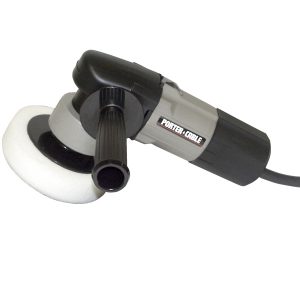
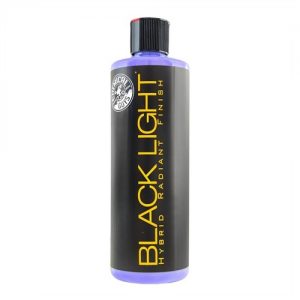
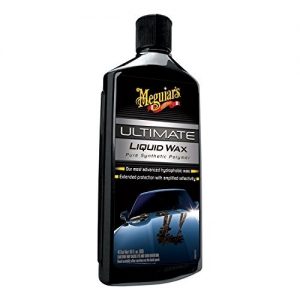

11 thoughts on “Waxing a Car With a Machine Polisher- Good Or Bad Idea?”
Hey Darren, Great article as usual. Will post some comments on “the forum” asap. Busy day yesterday…should say hectic…going back and forth on my business card design and a few other little frustrating issues. Talk to you soon.
Hey Phil! Thanks for the comment. How is the business card design coming along? Send over some samples on email if you need any feedback!
I recently purchased the Maxshine M15 and it came with three pads. One of them was a finishing pad so I thought I would give waxing my car a try.
I first tried it on my car with a Mother’s cleaning paste wax. Needless to say, it is very inconvenient to apply the wax to the pad having to remove it every time. If you really want to stick with paste wax, I would recommend you use a butter knife. I came up with that idea after waxing my son’s car.
Keep in mind that this is the first time I ever touched a buffer, so, even though it took me a while, I’m sure either using a butter knife or a liquid wax and with practice I will achieve better results and faster.
On a side note, I will definitely need to practice because as I was about to finish my son’s car my pad broke. I still had fun so I’m still encouraged to continue to practice.
I find this tutorial to be very informative. I will buy better pads (the ones you recommend) for sure! Thanks you for sharing your experience and knowledge!
I do have one question. I found that the buffer stalls very easily on lower speeds. Could you please share a tip or two to avoid this?
Thank you in advance!
Hi Luis!
Trying to use a paste wax with a polisher is never going to be easy,i would always recommend a liquid wax for this application.
Regarding your questions about the buffer stalling , this usually happens when you apply too much downward pressure. You should always use the lightest amount of pressure (especially if it is just for applying wax). Let the pad spin freely under the weight of the machine alone with no added pressure and you shouldnt find any stalling.This could explain why your pad broke too!
Best of luck with your next attempt and be sure to let me know how it goes!
Darren
great article
Thanks Bob – Glad you enjoyed it!
Interested in what your thoughts are on this product for a beginner like myself:
https://www.amazon.com/TORQX-Random-Orbital-Polisher-Items/dp/B01BKT63XM
Hi David , that should be fine for beginner use! I actually mentioned that one in one of my previous articles here https://drivedetailed.com/best-car-polisher-for-beginners/
Funny googling this question and coming across this article mate 🙂
Nice one! 🙂